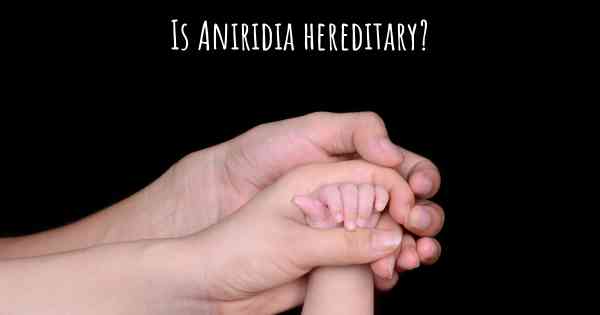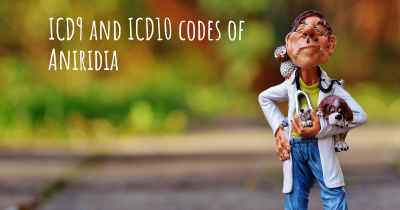Is Aniridia hereditary?
Here you can see if Aniridia can be hereditary. Do you have any genetic components? Does any member of your family have Aniridia or may be more predisposed to developing the condition?

Aniridia is a genetic disorder characterized by the absence or partial absence of the iris in the eye. It is typically inherited in an autosomal dominant pattern, meaning that a person with aniridia has a 50% chance of passing the condition on to their children. However, in some cases, aniridia can occur sporadically without a family history. Genetic counseling is recommended for individuals with aniridia or a family history of the condition to understand the specific inheritance pattern and associated risks.
Aniridia and Heredity:
Aniridia is a rare genetic disorder characterized by the partial or complete absence of the iris, the colored part of the eye. It is typically present from birth and affects both eyes. The condition is caused by mutations in the PAX6 gene, which plays a crucial role in eye development. Aniridia can lead to various visual impairments, including reduced visual acuity, sensitivity to light, and increased risk of developing other eye conditions such as glaucoma and cataracts.
Mode of Inheritance:
Aniridia is primarily inherited in an autosomal dominant pattern, meaning that a person with the condition has a 50% chance of passing it on to each of their children. However, it is important to note that not all cases of aniridia are inherited. Approximately two-thirds of individuals with aniridia have a family history of the disorder, while the remaining one-third have a spontaneous mutation in the PAX6 gene.
Genetic Testing and Counseling:
If an individual is diagnosed with aniridia, it is recommended to undergo genetic testing to identify the specific mutation in the PAX6 gene. Genetic testing can help confirm the diagnosis, determine the mode of inheritance, and provide valuable information for family planning. Genetic counselors play a crucial role in assisting individuals and families affected by aniridia by explaining the inheritance pattern, discussing the risks of passing on the condition, and providing emotional support.
Risk of Inheritance:
If one parent has aniridia due to a PAX6 gene mutation, each of their children has a 50% chance of inheriting the condition. It is important to note that the severity of aniridia can vary even among affected family members. Some individuals may have complete absence of the iris, while others may have a partially formed iris. Additionally, the associated visual impairments can also vary in severity.
Genetic Variability:
The PAX6 gene is highly variable, and different mutations can result in varying clinical presentations. Some mutations may only affect the eyes, while others can be associated with additional developmental abnormalities, such as intellectual disability or abnormalities in other organs. Genetic testing can help identify the specific mutation in an individual, which can provide insights into the potential risks and associated conditions.
Management and Treatment:
While there is currently no cure for aniridia, early intervention and regular eye examinations are crucial for managing the condition. Treatment options focus on addressing the associated visual impairments and preventing complications. This may include the use of corrective lenses, tinted glasses, or contact lenses to improve visual acuity and reduce sensitivity to light. Additionally, individuals with aniridia should undergo regular screenings for glaucoma and cataracts, as these conditions are more common in people with the disorder.
Conclusion:
Aniridia is a hereditary condition primarily caused by mutations in the PAX6 gene. While it is typically inherited in an autosomal dominant pattern, spontaneous mutations can also occur. Genetic testing and counseling are essential for individuals and families affected by aniridia to understand the risks of inheritance and make informed decisions. Although there is no cure, early management and regular eye care can help improve the quality of life for individuals with aniridia.
It can also occur sporadically in a fetus when the parent does not have aniridia.
Posted Jun 2, 2018 by James 1205
Posted Jun 3, 2019 by Mad-Eye Louie 1260
Posted Sep 16, 2017 by Loana 1701








